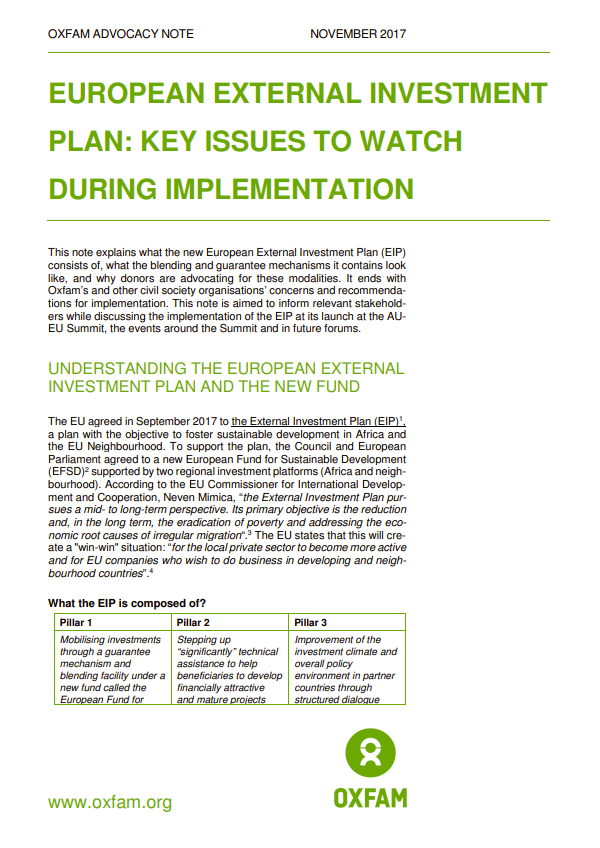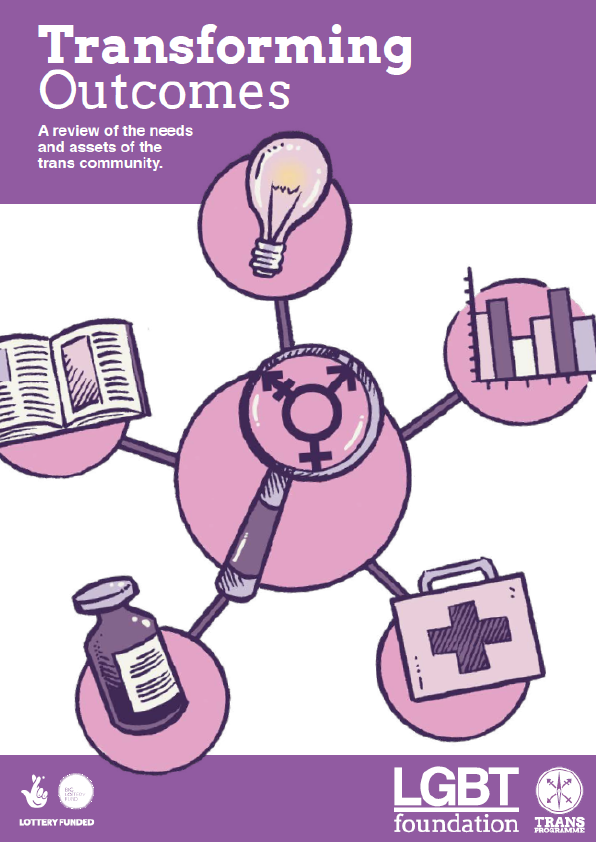Europe’s new plan for investing in Africa will see EU development support being channelled through private companies. Here we look at what the EU must do to ensure those funds actually go to the people aid is meant to help.
This note explains what the new European External Investment Plan (EIP) consists of, what the blending and guarantee mechanisms it contains look like, and why donors are advocating for these modalities. It ends with Oxfam’s and other civil society organisations’ concerns and recommendations for implementation. This note is aimed to inform relevant stakeholders while discussing the implementation of the EIP at its launch at the AU-EU Summit, the events around the Summit and in future forums.
UNDERSTANDING THE EUROPEAN EXTERNAL INVESTMENT PLAN AND THE NEW FUND
The EU agreed in September 2017 to the External Investment Plan (EIP)1 , a plan with the objective to foster sustainable development in Africa and the EU Neighbourhood. To support the plan, the Council and European Parliament agreed to a new European Fund for Sustainable Development (EFSD)2 supported by two regional investment platforms (Africa and neighbourhood). According to the EU Commissioner for International Development and Cooperation, Neven Mimica, “the External Investment Plan pursues a mid- to long-term perspective. Its primary objective is the reduction and, in the long term, the eradication of poverty and addressing the economic root causes of irregular migration“.3 The EU states that this will create a “win-win” situation: “for the local private sector to become more active and for EU companies who wish to do business in developing and neighbourhood countries”.4
What are the amounts?
The new EFSD guarantees and existing EU blending facilities – will be 4.1 billion euros until 2020 (end of the current EU Multi-Financial Framework cycle) that will be drawn from the EU budget and the European Development Fund (EDF), with which the commission expects to generate around 44 billion euros in investment. Of that 4.1 billion euro, the EFSD guarantees account for up to 1.5 billion euros, protected by a fund of 750 million euros to be used when a guaranteed project defaults. Should more than half of projects default, the difference will be covered through EU budget reserves in agreement with member states. The guarantee lasts four years after the agreement ensuring that the guarantee is not called upon after this time. 2.6 billion euros will go to the existing Neighbourhood Investment Facility and Africa Investment Facility. There is a possibility to replenish the fund annually for maximum three years.
The Commission estimates that if member state contributions match the EC’s 4.1 billion euro input, the EFSD could mobilize a total of 88 billion euros in investment. Member states can earmark their contributions either in cash or state guarantees for projects in certain countries or sectors. The EC will always be the first to pay default projects, the MSs will only pay up later. No member state has yet committed to putting money into the EFSD.
The EC plans to report the €750m guarantee as ODA to the OECD DAC, paid in tranches between 2017- 2019 to the EFSD fund. This will be the first time they start counting this type of Private Sector Instrument (PSI) as ODA, following discussions at the OECD DAC High Level meeting November 2017.5 The contingent liability amount of €750m will not be counted as ODA until rules have been agreed at the OECD DAC.
Overall it is important to be cautious with the EU’s EIP and blending and guarantees in general – blending with ODA should only be encouraged when it can demonstrate financial and development additionality; have in place effective safeguards to ensure the minimization of risks for people and the environment; promote women’s rights and economic opportunities rather than exacerbate inequalities; and strengthen rather than undermine the public sector.











